
Imagine revving your engine and feeling a sudden surge of power, propelling you forward with exhilarating force. That’s the magic of a turbocharger at work! 🚀 But what exactly is this automotive wonder, and how does it transform your driving experience?
In a world where fuel efficiency and performance are paramount, turbochargers have become the unsung heroes of modern engines. These compact yet powerful devices are revolutionizing the automotive industry, allowing smaller engines to punch above their weight class. Whether you’re a car enthusiast or simply curious about what’s under your hood, understanding turbochargers is key to appreciating the engineering marvels that keep us moving forward.
Join us as we dive into the world of turbochargers, exploring everything from their inner workings to their impact on modern vehicles. We’ll break down the components, uncover the secrets of their performance, and even guide you through installation and maintenance. By the end of this journey, you’ll have a newfound appreciation for these boost-building beauties and perhaps even consider adding one to your ride! 🔧🏎️
Visit website: Autobiography Zone
Understanding Turbochargers
What is a turbocharger?
A turbocharger is a forced induction device that increases an engine’s efficiency and power output by forcing extra compressed air into the combustion chamber. This ingenious piece of engineering harnesses the energy from exhaust gases to spin a turbine, which in turn drives a compressor wheel that pressurizes incoming air.
How turbochargers work
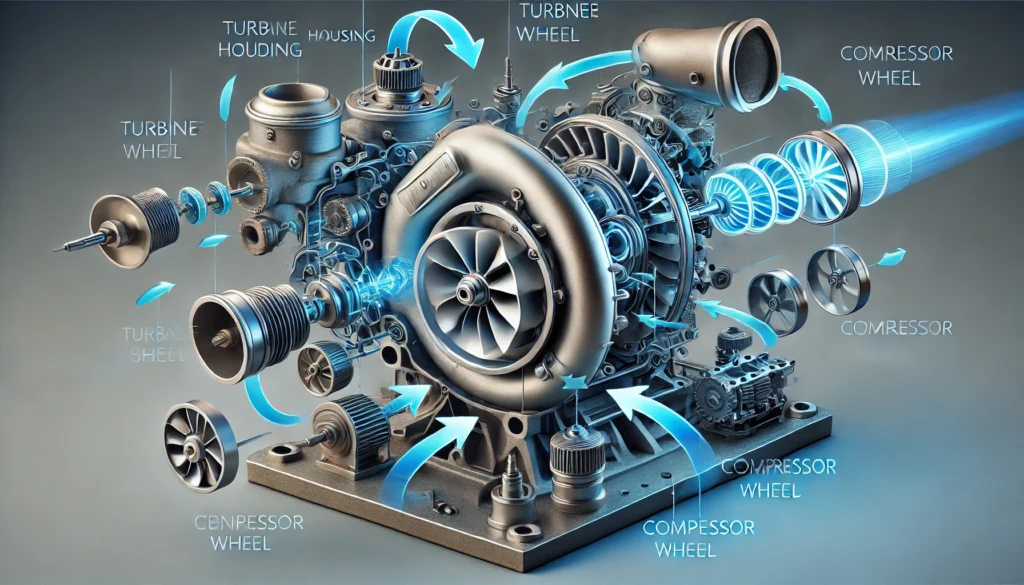
Turbochargers operate on a simple yet effective principle:
- Exhaust gas flows through the turbine housing
- The turbine wheel spins at high speeds (up to 250,000 RPM)
- The compressor wheel, connected to the turbine by a shaft, also spins
- The spinning compressor wheel draws in and compresses ambient air
- Compressed air is forced into the engine’s intake manifold
- More air and fuel enter the combustion chamber, resulting in increased power
This process creates a positive feedback loop, where more exhaust gas leads to more compressed air, which in turn produces more power and exhaust gas.
Benefits of turbocharging
Turbochargers offer several advantages over naturally aspirated engines:
| Benefit | Description |
|---|---|
| Increased power | Turbochargers can boost engine power by 30-40% or more |
| Improved fuel efficiency | More power from a smaller engine leads to better fuel economy |
| Reduced emissions | Smaller, turbocharged engines produce fewer emissions |
| Better performance at altitude | Turbochargers compensate for thinner air at high altitudes |
| Weight reduction | Smaller turbocharged engines are lighter than larger naturally aspirated ones |
Types of turbochargers

There are several types of turbochargers, each designed for specific applications:
- Single-turbo: The most common type, featuring one turbocharger for the entire engine
- Twin-turbo: Two identical turbochargers working in parallel, often used in V-shaped engines
- Sequential turbo: Two different-sized turbos that activate at different engine speeds
- Variable geometry turbo (VGT): Adjustable vanes in the turbine housing optimize performance across the RPM range
- Electric turbo: An electrically-driven compressor that provides instant boost without lag
Turbochargers have revolutionized the automotive industry, allowing manufacturers to produce smaller, more efficient engines without sacrificing performance. As we delve deeper into the world of turbocharging, we’ll explore the intricate components that make these remarkable devices function.
Turbocharger Components
A. Turbine

The turbine is the heart of a turbocharger, responsible for harnessing exhaust gases to power the entire system. Located on the exhaust side of the engine, it consists of a turbine wheel and housing. As hot exhaust gases flow through the turbine housing, they cause the turbine wheel to spin at incredibly high speeds, often exceeding 150,000 RPM.
Key features of the turbine:
- Material: Usually made of heat-resistant alloys
- Design: Optimized for efficiency and durability
- Size: Varies based on engine requirements
B. Compressor

Connected to the turbine via a shaft, the compressor is responsible for pressurizing the intake air. It consists of a compressor wheel (or impeller) and a compressor housing. As the turbine spins, it drives the compressor wheel, which draws in ambient air and compresses it before sending it to the engine’s intake manifold.
Compressor characteristics:
- Efficiency: Directly impacts overall turbocharger performance
- Air flow: Measured in pounds per minute (lb/min)
- Pressure ratio: Typically ranges from 1.5:1 to 3:1
C. Center Housing

The center housing, also known as the center section or bearing housing, is the core component that connects the turbine and compressor. It houses the shaft and bearings that allow for high-speed rotation with minimal friction. The center housing also contains oil passages for lubrication and cooling.
Components within the center housing:
- Shaft
- Bearings (journal or ball bearing)
- Seals
- Oil passages
D. Wastegate
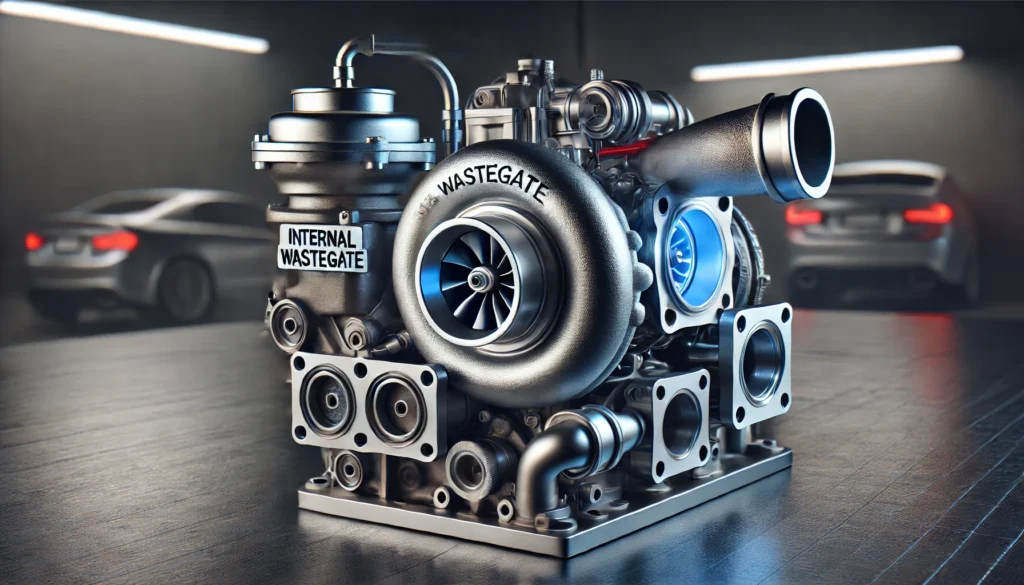
The wastegate is a crucial component that regulates boost pressure by controlling the flow of exhaust gases to the turbine. It acts as a pressure relief valve, preventing over-boosting and protecting the engine from excessive pressure.
Types of wastegates:
- Internal: Integrated into the turbine housing
- External: Separate unit mounted near the turbocharger
| Wastegate Type | Advantages | Disadvantages |
|---|---|---|
| Internal | Compact design, cost-effective | Limited flow capacity |
| External | Higher flow capacity, more precise control | More complex installation, higher cost |
E. Intercooler
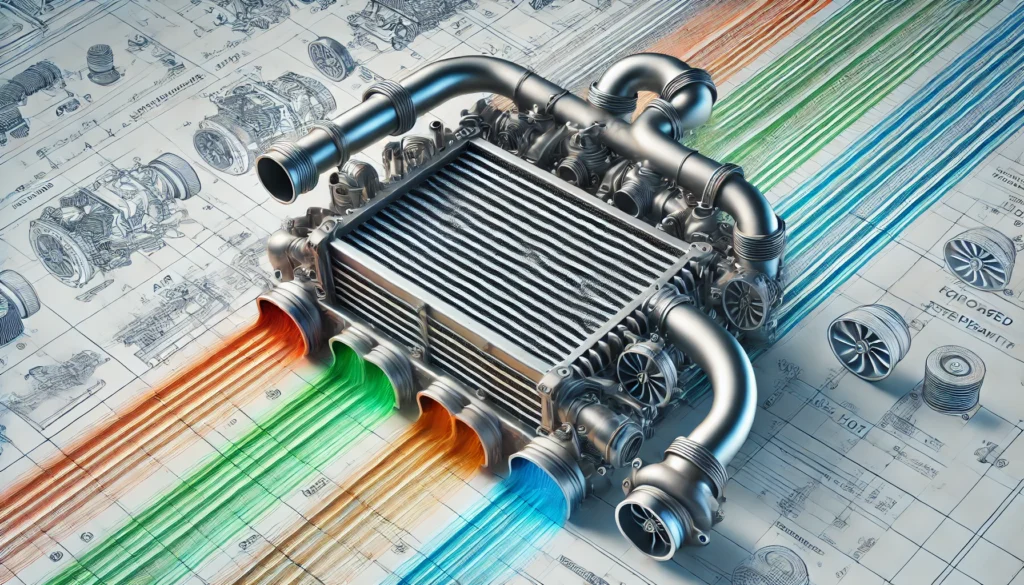
While not technically part of the turbocharger itself, the intercooler is an essential component in turbocharged systems. It cools the compressed air from the compressor before it enters the engine, increasing air density and reducing the risk of detonation.
Intercooler benefits:
- Increased air density
- Reduced intake air temperature
- Improved engine efficiency
- Lower risk of engine knock
Types of intercoolers:
- Air-to-air: Uses ambient air for cooling
- Air-to-water: Uses a liquid coolant for more efficient heat transfer
Now that we’ve covered the main components of a turbocharger, let’s explore how these parts work together to enhance engine performance and efficiency.
Visit website: Autobiography Zone
Turbocharger Performance
Boost pressure explained
Boost pressure is the cornerstone of turbocharger performance. It refers to the amount of air pressure above atmospheric pressure that is forced into the engine’s intake manifold by the turbocharger. This increased pressure allows more air to be packed into each cylinder, resulting in improved combustion and power output.
| Boost Pressure Level | Engine Performance Impact |
|---|---|
| Low (0-5 psi) | Mild power increase |
| Medium (5-15 psi) | Significant power boost |
| High (15+ psi) | Substantial power gain |
Proper boost pressure management is crucial for optimal engine performance and longevity. Modern turbochargers often incorporate wastegates or variable geometry technology to regulate boost pressure across different operating conditions.
Turbo lag and how to reduce it

Turbo lag is the delay between pressing the accelerator and feeling the turbocharger’s boost effect. This lag occurs because the turbocharger needs time to spool up and generate sufficient boost pressure. While turbo lag was more pronounced in older systems, modern advancements have significantly reduced its impact.
Strategies to minimize turbo lag include:
- Twin-scroll turbochargers
- Variable geometry turbines
- Electric turbochargers or hybrid systems
- Smaller, lighter turbine wheels
- Anti-lag systems in performance applications
These innovations help deliver more immediate power and smoother acceleration, enhancing the overall driving experience.
Fuel efficiency improvements
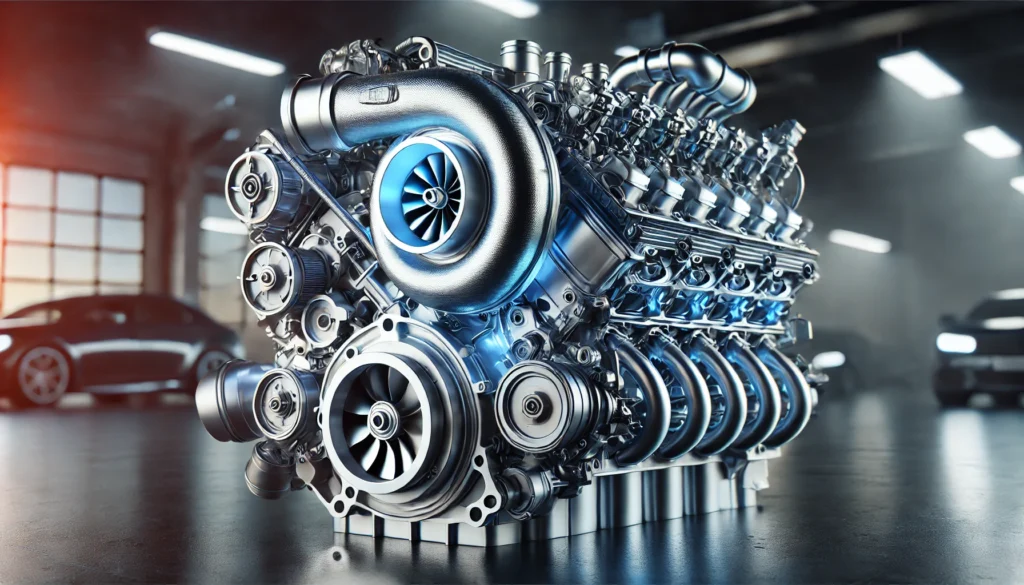
Turbochargers contribute significantly to fuel efficiency by allowing manufacturers to use smaller, more efficient engines without sacrificing power. This concept, known as “downsizing,” has become increasingly popular in the automotive industry.
Key fuel efficiency benefits of turbochargers:
- Improved thermal efficiency
- Reduced engine weight
- Better power-to-weight ratio
- Optimized combustion process
In many cases, turbocharged engines can achieve 20-30% better fuel economy compared to naturally aspirated engines of similar power output.
Increased horsepower and torque
One of the most appealing aspects of turbochargers is their ability to dramatically increase an engine’s horsepower and torque output. By forcing more air into the combustion chamber, turbochargers enable engines to burn more fuel, resulting in greater power production.
| Engine Type | Typical Horsepower Increase |
|---|---|
| 4-cylinder | 30-40% |
| 6-cylinder | 40-50% |
| 8-cylinder | 50%+ |
This power boost is particularly noticeable in the mid-range RPM, where turbochargers excel at providing additional torque. The increased torque not only improves acceleration but also enhances towing capacity and overall vehicle performance.
As we’ve seen, turbochargers offer significant performance benefits across various aspects of engine operation. Next, we’ll explore the intricacies of turbocharger installation and maintenance, crucial factors in ensuring these performance gains are realized and sustained over time.
Turbocharger Installation and Maintenance
Proper installation techniques

Installing a turbocharger requires precision and expertise. Follow these key steps for a successful installation:
- Preparation:
- Clean the engine bay thoroughly
- Gather all necessary tools and components
- Review the manufacturer’s instructions
- Mounting:
- Secure the turbocharger to the exhaust manifold
- Ensure proper alignment with oil feed and return lines
- Use high-quality gaskets and bolts
- Oil system connection:
- Install new oil feed and return lines
- Verify proper oil flow and pressure
- Intake and exhaust connections:
- Connect the air intake system
- Install the intercooler (if applicable)
- Attach the exhaust system
- Final checks:
- Double-check all connections and fittings
- Prime the oil system before starting the engine
| Installation Step | Key Consideration |
|---|---|
| Preparation | Cleanliness and organization |
| Mounting | Proper alignment and secure fastening |
| Oil system | Correct oil pressure and flow |
| Intake/Exhaust | Leak-free connections |
| Final checks | Thorough inspection before startup |
Common turbocharger problems

Turbochargers can experience various issues that affect performance and longevity:
- Oil leaks: Often caused by worn seals or gaskets
- Excessive exhaust smoke: Indicates oil consumption or internal damage
- Whistling or whining noise: May suggest bearing wear or impeller damage
- Lack of boost pressure: Could be due to leaks or wastegate issues
- Overboost: Potentially caused by wastegate malfunction or controller issues
Visit website: Autobiography Zone
Maintenance tips for longevity
Proper maintenance is crucial for extending the life of your turbocharger:
- Regular oil changes: Use high-quality, manufacturer-recommended oil
- Allow proper warm-up: Let the engine idle for 30-60 seconds before driving
- Cool-down period: Idle for 1-2 minutes before shutting off the engine
- Keep air filters clean: Replace as recommended by the manufacturer
- Monitor boost pressure: Use a gauge to detect any irregularities
- Address issues promptly: Don’t ignore unusual noises or performance changes
Signs of turbocharger failure

Be vigilant for these warning signs that may indicate turbocharger problems:
- Loss of power: Especially noticeable during acceleration
- Excessive exhaust smoke: Blue smoke indicates oil burning
- Check Engine Light: May illuminate due to boost-related issues
- Loud whining noise: Often described as a “turbine” sound
- Oil consumption: Increased oil usage without visible leaks
- Boost pressure fluctuations: Inconsistent or low boost readings
By understanding proper installation techniques, common problems, maintenance requirements, and failure indicators, you can ensure optimal performance and longevity of your turbocharger. Regular inspections and timely maintenance are key to preventing major issues and costly repairs. If you notice any signs of turbocharger failure, it’s crucial to have your vehicle inspected by a qualified mechanic as soon as possible. With proper care and attention, your turbocharged engine can provide enhanced performance and efficiency for years to come.
Turbochargers in Modern Vehicles
Turbocharged vs. naturally aspirated engines
Turbocharged engines have become increasingly prevalent in modern vehicles, offering several advantages over their naturally aspirated counterparts. Let’s compare these two engine types:
| Feature | Turbocharged Engines | Naturally Aspirated Engines |
|---|---|---|
| Power Output | Higher power-to-displacement ratio | Lower power-to-displacement ratio |
| Fuel Efficiency | Generally more fuel-efficient | Less fuel-efficient at higher power outputs |
| Engine Size | Smaller engines with comparable power | Larger engines required for similar power |
| Throttle Response | Slight turbo lag | Immediate throttle response |
| Maintenance | More complex, potentially higher costs | Simpler design, generally lower maintenance costs |
Turbocharged engines excel in producing more power from smaller displacements, making them ideal for modern vehicles where efficiency is paramount. This advantage allows manufacturers to downsize engines without sacrificing performance, a trend known as “engine downsizing.”
Turbocharging in diesel engines
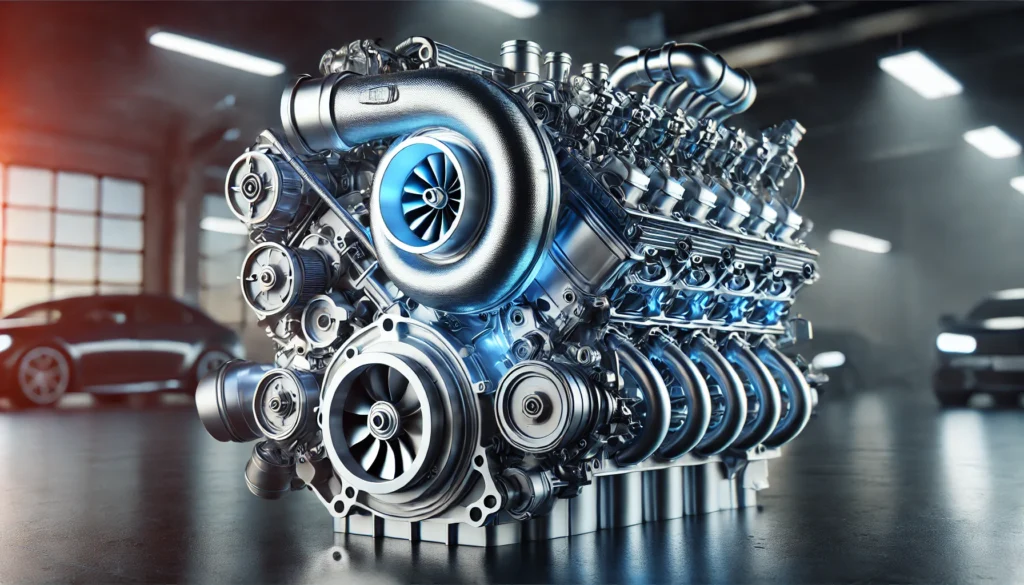
Turbocharging has been a game-changer for diesel engines, particularly in modern vehicles. Here’s why turbochargers are almost ubiquitous in diesel applications:
- Improved power density
- Enhanced fuel efficiency
- Reduced emissions
- Better low-end torque
Diesel engines benefit significantly from turbocharging due to their higher compression ratios and the nature of diesel combustion. The turbocharger helps overcome the inherent limitations of diesel engines, such as lower rev ranges, by forcing more air into the combustion chamber and allowing for more efficient fuel burning.
Twin-turbo and bi-turbo setups

As manufacturers push for even more power and efficiency, twin-turbo and bi-turbo configurations have gained popularity in modern vehicles. These setups typically fall into two categories:
- Parallel twin-turbo: Two identical turbochargers working simultaneously
- Sequential twin-turbo: Two different-sized turbochargers operating at different engine speeds
Benefits of twin-turbo setups include:
- Reduced turbo lag
- Increased power output
- Improved throttle response
- Better power distribution across the rev range
Luxury and high-performance vehicles often employ twin-turbo setups to achieve impressive power figures while maintaining drivability and efficiency.
Electric turbochargers: The future of forced induction

As the automotive industry shifts towards electrification, electric turbochargers are emerging as a promising technology. These innovative systems offer several advantages over traditional exhaust-driven turbochargers:
- Instant boost: No turbo lag, as the electric motor can spin up immediately
- Improved efficiency: Not reliant on exhaust gases, allowing for more flexible placement and operation
- Energy recovery: Can act as a generator to recover energy during deceleration
- Emissions reduction: Helps meet stricter emissions standards by optimizing engine performance
Electric turbochargers, also known as e-turbos, are currently being developed and implemented by various manufacturers. They represent a bridge between conventional internal combustion engines and fully electric powertrains, offering a stepping stone towards more efficient and environmentally friendly vehicles.
As we look to the future of automotive technology, it’s clear that turbochargers will continue to play a crucial role in enhancing engine performance and efficiency. The evolution from traditional turbochargers to advanced twin-turbo setups and electric turbochargers demonstrates the ongoing innovation in this field, promising even more exciting developments in the years to come.
10 FAQs
1. What is a turbocharger?
A turbocharger is a device that increases an engine’s power output by forcing more air into the combustion chamber. It uses the engine’s exhaust gases to drive a turbine, which in turn spins a compressor that pressurizes incoming air.
2. How does a turbocharger improve engine performance?
Turbochargers enhance engine performance by:
- Increasing horsepower without significantly increasing engine weight
- Improving fuel efficiency
- Reducing emissions
- Enhancing torque, especially at lower RPMs
3. Are there any drawbacks to using a turbocharger?
While turbochargers offer many benefits, they also have some potential drawbacks:
| Drawbacks | Explanation |
|---|---|
| Turbo lag | Slight delay in power delivery when accelerating |
| Complexity | More components mean potentially higher maintenance costs |
| Heat generation | Increased heat output can stress engine components |
| Cost | Initial installation and potential replacement costs |
4. How long do turbochargers typically last?
The lifespan of a turbocharger can vary depending on several factors:
- Driving habits
- Maintenance practices
- Vehicle make and model
- Environmental conditions
On average, a well-maintained turbocharger can last anywhere from 100,000 to 150,000 miles.
5. Can a turbocharger be added to any car?
While it’s technically possible to add a turbocharger to most naturally aspirated engines, it’s not always practical or cost-effective. Factors to consider include:
- Engine design and compatibility
- Fuel system capacity
- Transmission strength
- Cooling system efficiency
It’s often more practical to purchase a vehicle that comes with a factory-installed turbocharger.
6. How can I maintain my turbocharger?
To keep your turbocharger in good condition:
- Use high-quality engine oil and change it regularly
- Allow the engine to warm up before driving aggressively
- Let the engine idle for a minute before shutting it off
- Use the correct grade of fuel recommended by the manufacturer
- Address any engine issues promptly to prevent damage to the turbocharger
7. What’s the difference between a turbocharger and a supercharger?
| Aspect | Turbocharger | Supercharger |
|---|---|---|
| Power source | Exhaust gases | Engine’s crankshaft |
| Lag | Some lag present | Instant power delivery |
| Efficiency | More efficient at high RPMs | More efficient at low RPMs |
| Installation | More complex | Generally simpler |
| Heat generation | Higher heat output | Lower heat output |
8. Can turbochargers improve fuel economy?
Yes, turbochargers can improve fuel economy by allowing smaller engines to produce the same power as larger naturally aspirated engines. This downsizing effect leads to better fuel efficiency in normal driving conditions.
9. Are turbocharged engines less reliable?
Modern turbocharged engines are generally as reliable as naturally aspirated engines when properly maintained. However, they may require more attentive maintenance due to their additional components and higher operating temperatures.
10. What causes turbocharger failure?
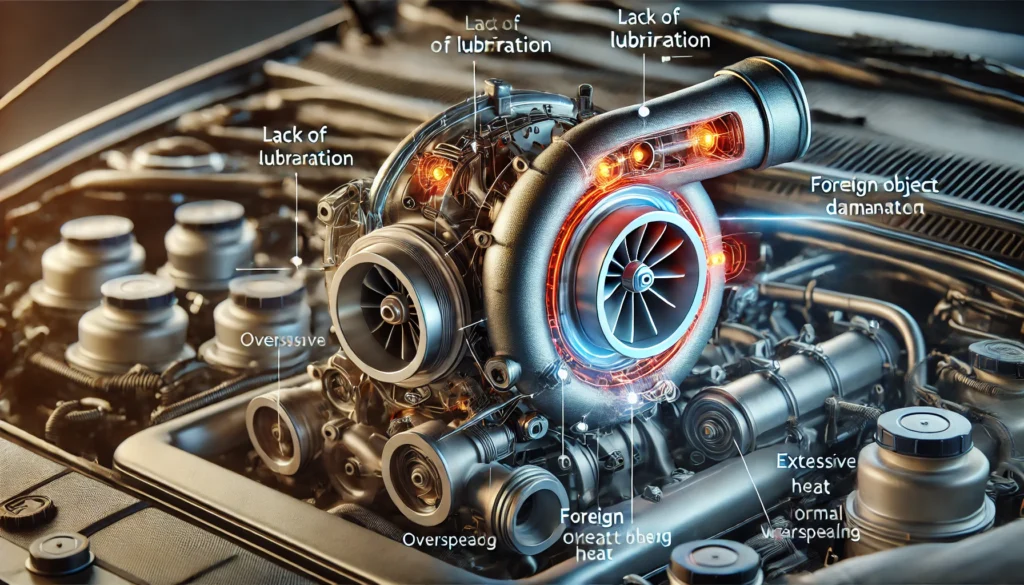
Common causes of turbocharger failure include:
- Lack of lubrication due to low oil levels or poor oil quality
- Oil contamination
- Foreign object damage
- Excessive heat
- Overspeeding
- Normal wear and tear over time
Regular maintenance and addressing issues promptly can help prevent premature turbocharger failure.
Turbochargers have revolutionized the automotive industry, offering a powerful solution to enhance engine performance and efficiency. From their basic components to their intricate workings, these devices have become an integral part of modern vehicle design. Understanding the installation, maintenance, and performance aspects of turbochargers is crucial for both automotive enthusiasts and everyday drivers alike.
As we continue to push the boundaries of automotive technology, turbochargers will undoubtedly play an increasingly important role in shaping the future of transportation. Whether you’re considering upgrading your vehicle or simply want to understand the technology under your hood, embracing the world of turbochargers can lead to a more informed and rewarding driving experience.
Visit website: Autobiography Zone